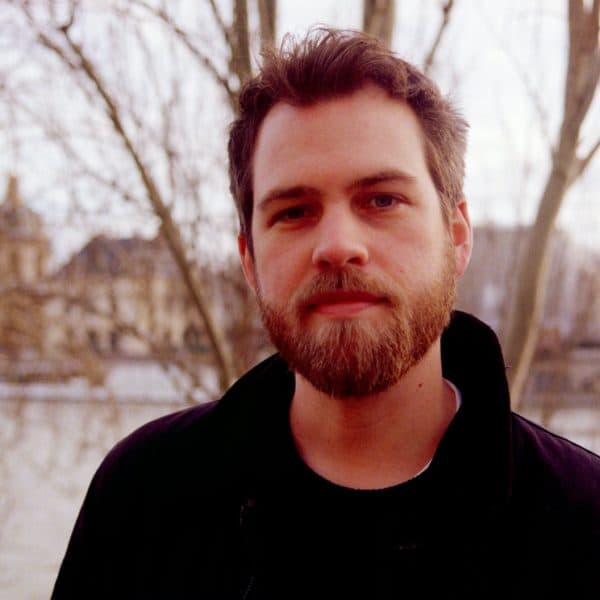Advertisement
The many colors of composer Julian Loida's new album 'Giverny'

Later in his life, much of Claude Monet’s work featured his garden in the quaint village of Giverny, roughly 50 miles northwest of Paris. Many of these paintings illustrate the lovely warmth of the area with an array of marigold tones speckled with lavender, muted greens and pops of rose-red. “The light in this town is soft and warm, where ‘golden hour’ is all day, serene,” says Boston-based composer Julian Loida in a press release. His new album, “Giverny,” a contemplative collection of neoclassical pieces, pulls from his experience in the village. “I visited twice in the spring and fall when this music came to me,” he says of the album’s pensive title track, a twinkling piano composition peppered with feathery strings and orchestral percussion.
Like the soft abstraction of Monet’s impressionist works, Loida’s “Giverny” is a sprawling palette of tones, a marriage of textures in elegant harmony. Inspired by contemporary neoclassical composers like Nils Frahm, Ólafur Arnalds and Poppy Ackroyd, the album is structured around a series of improvised piano compositions layered with vibraphone, strings, synthesizers, percussion, minimal electronic production and occasionally, voice. “This album really feels like me,” he tells me on a call from Martha’s Vineyard before a gig. “It feels like music that — dare I say — only I could make.”
It’s true. Loida, who received a master’s in classical percussion from New England Conservatory in 2017, is synesthetic, a neurological phenomenon when one of our senses is perceived as another. In his case, harmonic tones evoke this perception; Loida hears music in color. “The way overtones mix and jumble, it evokes shades and colors, or like whispers of light and color,” he explains. “Often I think of keys: C is orange, E is yellow, B major is a light blue.” When I told him that “Giverny” feels like he’s painting with sound, he responds resolutely: “That is the goal.”
“The synesthesia for me isn’t exactly like a pure connection between sound and visual, but just an openness — like how a chord can taste like honey on your tongue, or olive oil, or barbeque sausage, or whatever — that those things are related. Everything is interconnected.”
The uniqueness of Loida’s musicianship sparks energy into the meditative quality of “Giverny.” While each of its eleven songs are driven by piano, its immaculate orchestration breathes complex life into each piece. The swirling “Waves” heavily features the vibraphone (Loida’s primary instrument) in a curious, mixed-meter arrangement that fluctuates in tempo; you can visualize a whirlpool forming from within a bed of sea rocks or the feeling of wet sand in between your toes. “It felt like there was a sense of camera angle to it all,” he says of the album, noting his particular fondness of the intersection between audio and visual.
Loida recalls mixing “Waves” with producer Charlie Van Kirk as if he was a director on the editing room floor desiring a more cinematic fade out on the piano. “I was like, ‘Can we do a fade out and a distancing of the piano?’”— he’s recalling mixing “Waves” with producer Charlie Van Kirk — “And [Charlie] did [a fade], but I said I needed it to be like at the end of a movie when the person is walking into the sunset and the camera is really zooming away — like, really zooming away — and everything is becoming small.”
Advertisement
Where Loida’s chosen genre — new age, neoclassical, ambient, whichever you like — can encroach on the monotonous, “Giverny” remains fresh at every juncture. Each piece is experimental without excessive deviation. The songs are harmonic without being banal and lyrical with barely any words at all. The brooding “Sphere” feels almost Robert Glasper-esque in its plump, squirrely bassline and plodding piano part. The resonant “Ambrosia” casts vibraphone overtones like looming shadows at dusk, its presence showing the influence of late-era Brian Eno. A moving rendition of Erik Satie’s “Gymnopedíe No. 1” ties in the European impressionism of it all. With its hearty piano chords, the hushed, poignant sound of “golden hour” floats in the stillness of the sun, like dust particles in the rays beaming through a bay window.
Considering Loida’s work with various non-profits and educational centers, it comes as no surprise that “Giverny” is such a generous emotional offering. For several years, he ran the children’s program for Shelter Music Boston, an initiative to offer educational programming for homeless and low-income families in Greater Boston. While working on this album, he was working full-time running music and events for the Cultural Center of Cape Cod, traveling to Round Pond, Maine on the weekends to do post-production with Van Kirk.
“I think the album captures an element of healing,” he says. But unlike an album that tells you how to feel with lyrics and melodies, “Giverny” offers a meditation on the minutiae, an experiment in introspection and the listener’s relationship with instrumental music. Loida hopes listeners will form an emotional connection with this album the way you would with a comfort meal or a friend to vent to.
But ultimately, this is an album for Loida. Like Monet’s “The Water Lily Pond,” or “Woman with a Parasol,” “Giverny” is a defining moment of Loida’s career. It’s a lasting portrait that captures the artist as a realized creative entity. “I set out to make music that I wanted to and that would feel good for me,” he says. “I think generally that’s a better place to go than to make music for other people.”
It’s a sentiment that is reminiscent of something Monet once said: “Color is my daylong obsession, joy and torment.”

